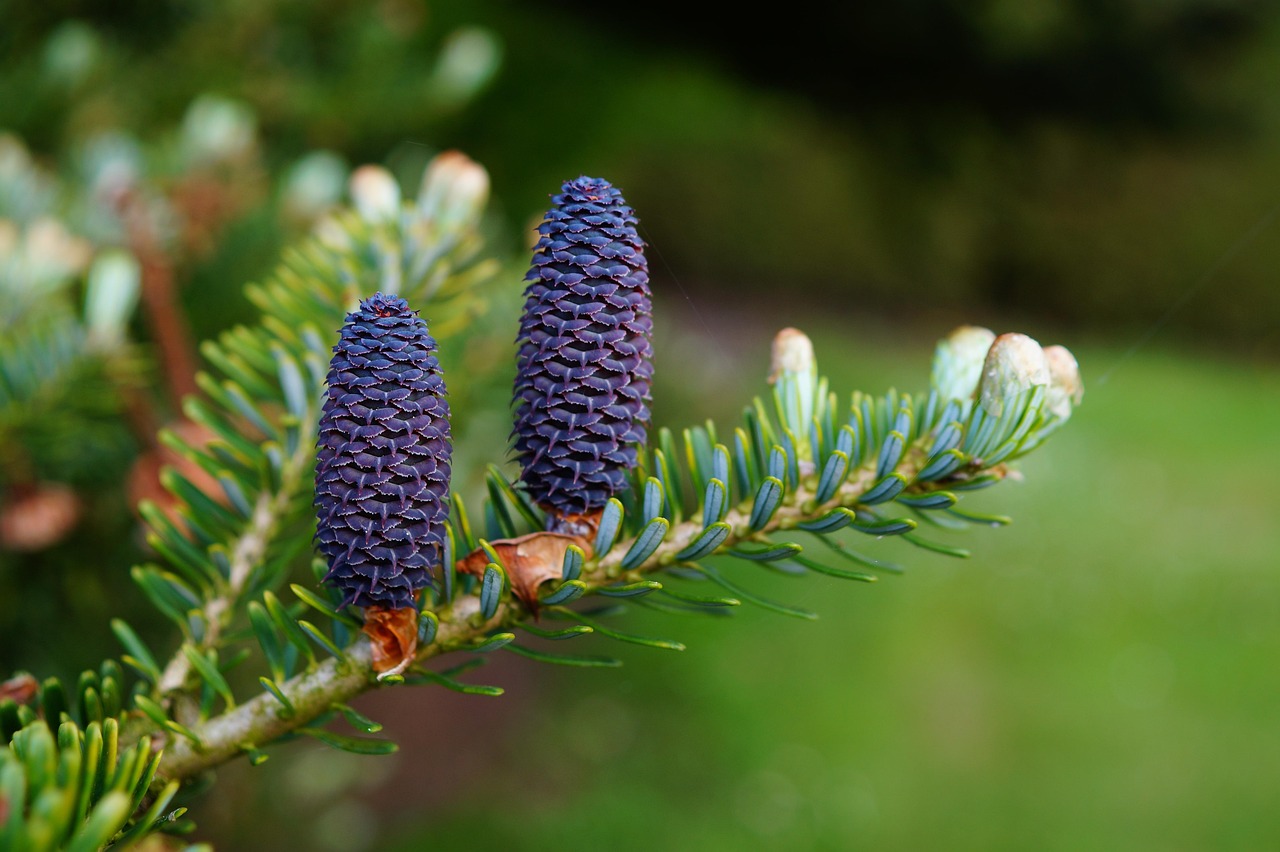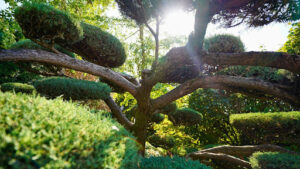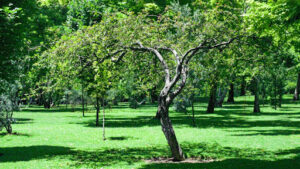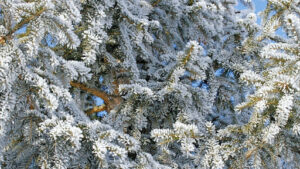American Holly Evergreen Trees: Year-Round Garden Beauty

When I first started thinking about adding some year-round interest to my garden, the American holly evergreen tree immediately came to mind. It’s one of those plants that just feels classic, you know? It’s not just about the festive red berries that everyone associates with the holidays, though those are certainly a big part of its charm. The real magic of the American holly evergreen tree is its consistent, deep-green foliage that stays put all year long. This means no bare branches to stare at during the winter months; instead, you get this lovely, dense structure that provides a sense of permanence and life even when everything else is dormant.
American Holly Evergreen Trees: Characteristics and Garden Appeal
I’ve found that its natural shape is quite appealing too. Most American hollies grow into a nice, upright pyramid or cone shape without much fuss. This makes them fantastic for a few different garden roles. They can serve as a handsome specimen plant, drawing the eye with their glossy leaves and, on the female trees, those bright berries. They’re also brilliant for creating privacy screens or hedges because they grow so densely. It’s like having a natural, living fence that looks good no matter the season.
Here’s a quick rundown of what makes them so special:
- Year-round green foliage: Provides color and structure when other plants have none.
- Attractive berries: Bright red berries on female trees add a pop of color, especially in winter.
- Natural shape: Often grows into a pleasing pyramidal form, reducing the need for heavy pruning.
- Wildlife friendly: Offers food and shelter for birds and other creatures.
One thing I learned early on is that to get those iconic red berries, you absolutely need both a male and a female American holly evergreen tree nearby. The female tree is the one that produces the fruit, but it needs pollen from a male tree to make it happen. It’s a bit of a partnership, and it’s worth planning for if berries are a must-have in your garden.
Beyond their looks, these trees are surprisingly tough. They can handle a range of conditions, though they do have their preferences. Knowing these details helps a lot when you’re trying to figure out the best spot for your own American holly evergreen tree. It’s a plant that really rewards you for giving it what it needs, offering beauty and a bit of nature’s resilience right in your backyard. I’m really looking forward to seeing mine mature over the years. You can find out more about different types of trees, including how they adapt to various climates, by looking at resources on native trees.
Ideal Growing Conditions for American Holly Evergreen Trees

When I’m thinking about where to plant my American holly, I really focus on a few key things to make sure it’s happy. First off, light. These trees aren’t super picky, but they do best with at least a few hours of direct sun each day. Full sun is great, but if my yard gets a bit shady in the afternoon, especially during those hot summer months, partial shade is perfectly fine too. Too much shade, though, and I notice the foliage gets a bit thin, which isn’t the look I’m going for.
Soil is another big one. My American holly prefers soil that drains well and is a little on the acidic side. It’s pretty forgiving, though; I’ve seen it do well in sandy, loamy, and even clay soils, as long as water doesn’t just sit there. I try to avoid spots where water puddles after a good rain, as that’s a recipe for root rot. It’s also good to know that they’re not huge fans of soils with a lot of limestone.
As for hardiness, I’m pretty pleased with how tough these trees are. They generally do well in USDA hardiness zones 5 through 9. This means they can handle a good amount of cold, and even if the winter is harsh and they lose a bit of their leaf color, or even drop a few leaves, I know not to panic. They’re usually just fine and will leaf out again in the spring. It’s important to protect them from strong winter winds and intense winter sun, especially when they’re young. In hotter climates, giving them some afternoon shade really helps them out.
I’ve learned that American hollies are pretty drought-tolerant once they get established, but I still make sure to water them consistently when they’re young, especially if it’s dry out. It helps them build a strong root system.
Here’s a quick rundown of what I look for:
- Light: Full sun to partial shade (at least a few hours of sun daily).
- Soil: Well-drained, slightly acidic. Tolerates various soil types but dislikes waterlogged conditions.
- Hardiness: USDA Zones 5-9. Protect from harsh winter winds and sun.
It’s nice to have a plant that’s so adaptable. I’m also looking forward to seeing the berries, but I know I’ll need to make sure I have a male and female tree nearby for that to happen. It’s a small detail, but important for the full effect. I’ve read that they grow slowly, about 12 to 24 inches a year, which is fine by me; it means they’ll be around for a long time. If you’re looking for a tree that’s not too demanding, the American holly is definitely worth considering for your garden. You can find more information on planting them atnative trees.
Planting and Spacing Tips for American Holly Evergreen Trees

When I decided to add an American Holly to my yard, I spent a good amount of time figuring out the best spot. These trees can get pretty big, so you don’t want to plant them too close to the house or other plants. I aimed for a place that gets at least a few hours of direct sun each day, though they can handle a bit more shade too. Just remember, too much shade and the leaves might not look as full.
Give them room to grow; they can eventually reach 40 to 60 feet tall and spread 10 to 20 feet wide. It’s a good idea to think about their mature size when you’re picking a location. If you’re planting more than one, I learned that spacing them about 10 to 15 feet apart works well, especially if you’re hoping for a nice, dense privacy screen or hedge. For a specimen tree, just make sure it has a good amount of open space around it.
Here’s a quick rundown of what I considered:
- Sunlight: Aim for full sun to partial shade. At least 4 hours of sun is a good minimum.
- Soil: They like soil that drains well and is a bit acidic. Avoid spots where water tends to sit after it rains.
- Wind: Young trees can be sensitive to harsh winter winds and strong sun, so a spot with some protection is helpful.
I found that digging a hole about twice as wide as the root ball, but no deeper, was the way to go. This helps the roots spread out easily into the surrounding soil. Make sure to backfill with the original soil, and don’t pack it down too hard – you want the water to be able to get in.
If you’re planning to have those classic red berries, remember you’ll need both a male and a female tree. One male tree can pollinate several females, so you don’t need a lot. I spaced my male tree within about 50 feet of the females to make sure pollination happens.
Watering, Mulching, and Soil Maintenance for American Holly Evergreen Trees
Keeping your American Holly happy really comes down to a few key things: water, mulch, and good soil. When I first planted mine, I was diligent about watering, especially during that first year. It’s like they say, young trees need consistent moisture to get their roots settled in properly. Don’t let the soil completely dry out, but also avoid waterlogging it. Once they’re established, they’re tough and can handle a bit of dryness, but a good watering now and then, especially when it’s really hot and dry, still makes a big difference in how lush they look.
Mulching is another one of those simple things that pays off. I spread a layer of wood chips or shredded bark around the base of my hollies, keeping it a few inches away from the trunk itself. This helps keep the soil moist, which is great, and it also keeps the soil temperature a bit more even. It’s like giving them a cozy blanket, especially in the winter. Plus, it helps cut down on weeds, which is always a win in my book.
As for the soil, American Hollies aren’t super picky, but they do prefer it to drain well and be a little on the acidic side. If your soil is heavy clay or tends to stay wet, you might want to amend it with some compost or other organic matter before planting to help with drainage. I’ve found that my hollies do best when the soil isn’t constantly soggy. If you’re curious about your soil’s pH, you can always get a simple test kit. Knowing if it’s too alkaline can help you make adjustments, though they are pretty forgiving. For established trees, I usually just give them a good watering if the soil feels dry a few inches down. It’s not rocket science, just paying attention to what the tree seems to need.
Taking care of the soil and watering needs of your American Holly is pretty straightforward. Focus on consistent moisture for young trees and occasional watering for mature ones, always ensuring good drainage. A good layer of mulch will help immensely with moisture retention and weed control, making your job a lot easier and your tree a lot happier.
Keeping American Holly Evergreen Trees Healthy and Attractive
When it comes to pruning my American holly, I’ve found that less is usually more. These trees have a naturally lovely shape, kind of a pyramid, so they don’t need a lot of fussing to look good. My main goal with pruning is to keep the tree healthy and remove anything that looks out of place. I usually do this in late winter or early spring, just before the new growth really kicks in. It’s the perfect time to snip off any branches that might have been damaged over the winter or any that look diseased.
If I want to encourage a denser growth habit or shape it a bit more, I’ll do some light trimming. For instance, if I’m aiming for a more formal hedge, I’ll shear it back a bit more often. But for a specimen tree, I mostly just let it do its thing.
Here’s a quick rundown of what I focus on:
- Remove dead or damaged branches: This is the most important part for tree health.
- Address crossing branches: If two branches are rubbing against each other, I’ll remove one to prevent wounds.
- Thin out crowded areas: Sometimes, especially on older trees, the center can get a bit too dense. I’ll thin it out a little to improve air circulation.
- Shape for aesthetics (optional): If I want a specific look, I’ll make light cuts to guide its growth.
I’ve learned that over-pruning can actually stress the tree and reduce berry production. It’s a balancing act, really. You want to maintain its health and appearance without going overboard. For me, the goal is a healthy, attractive tree that looks natural, not something that’s been overly sculpted. It’s important to remember that American hollies are slow growers, so any pruning you do will have a lasting effect.
I also pay attention to the base of the tree. Keeping the area around the trunk clear of debris and weeds helps a lot. If I’m growing a specific variety or trying to get the best berry display, I might consider how pruning affects the overall structure and the potential for fruit. For example, if I’m looking to maximize the bright red berries, I’ll be careful not to remove too many of the fruiting branches. It’s a good idea to check out resources on pruning specific trees to get a better sense of what works best for different types of hollies and desired outcomes. My own experience has shown that a little thoughtful pruning goes a long way in keeping my American holly looking its best year after year.
Flowering, Berry Production & the Role of Male and Female Trees in American Holly Evergreen Trees
When I first started thinking about my American Holly, I was mostly focused on its glossy leaves and how it would look in the winter. But then I learned about the flowers and berries, and it changed how I see the plant. It turns out, the flowers are important, even if they aren’t showy. They pop up in the spring and are a good source of nectar for bees and other helpful insects. It’s nice to know my holly is doing its part for the local pollinators.
Now, the berries are what most people think of, and I have to admit, I was a bit confused at first. I learned that American Holly is dioecious, which is a fancy word meaning there are separate male and female plants. Only the female trees actually produce those bright red berries that look so good against the green leaves. To get berries, you absolutely need a male tree nearby. The male tree’s pollen has to travel to the female flowers for them to develop fruit. I found out that one male tree can pollinate several female trees, so you don’t need a whole forest of males. A good ratio is about one male for every five or seven females. I made sure to get a male variety like ‘Jersey Knight’ when I planted my females, and it’s made all the difference.
The berries are not just for looks; they’re a really important food source for birds during the winter. When other food is scarce, these red fruits provide essential energy for robins, thrushes, and other feathered visitors. It’s a small way I can help wildlife in my yard.
It’s also worth noting that not all hollies are the same. While I’m focused on the American Holly (Ilex opaca), there are others like English Holly (Ilex aquifolium), which has sharper leaves and a more compact shape. Winterberry (Ilex verticillata) is another one, but it’s deciduous, meaning it loses its leaves in the fall, which is quite different from the evergreen nature of the American Holly.
If you’re looking to get berries, it’s best to choose named varieties rather than just any seedling. Varieties like ‘Jersey Princess’ (female) and ‘Jersey Knight’ (male) were developed for better performance. Another good one is ‘Satyr Hill’, which is known for producing a lot of berries and growing a bit faster than some other American Hollies. Getting the right male and female combination is key to seeing those beautiful red berries appear each year. It’s a little bit of planning, but the reward is a stunning display that benefits wildlife, too. I’ve found that having a healthy holly means thinking about its whole life cycle, from those tiny spring flowers to the winter berries. It’s a plant that truly gives back to the garden ecosystem. For more on planting, you might want to check out tips on mulberry tree growth.
Common Pests, Diseases & Troubleshooting for American Holly Evergreen Trees

While American hollies are generally tough trees, I’ve found that even the most resilient plants can sometimes run into a few issues. It’s not usually a big deal, but it’s good to know what to look out for.
One common problem I’ve noticed is leaf spot. This usually shows up as small, dark spots on the leaves. It’s often caused by a fungus, and it tends to happen when there’s too much moisture or poor air circulation. If I see it, I try to prune away affected branches to let more air in and avoid overhead watering, especially when the leaves are already wet.
Another thing that can pop up is scale insects. These little guys can suck the sap right out of the branches and leaves, making the tree look a bit sickly. They often look like tiny bumps on the twigs. If I catch them early, I can sometimes just wipe them off with a damp cloth or a cotton swab dipped in rubbing alcohol. For a bigger infestation, I might use an insecticidal soap or horticultural oil, making sure to spray when the sun isn’t too strong.
Sooty mold is another one that can appear, but it’s usually a secondary problem. It’s a black, powdery fungus that grows on the honeydew secreted by sap-sucking insects like aphids or scale. So, if I see sooty mold, I know I need to deal with the insects first. Once the insects are gone, the sooty mold usually disappears on its own.
It’s important to remember that a healthy tree is the best defense against pests and diseases. Making sure my American holly gets the right amount of sun, water, and has good soil drainage really makes a difference. Proper spacing is also key, as it helps with air flow, which is a big help in preventing fungal issues.
If I’m ever unsure about a problem, I usually check out resources on native trees to get a better idea of what might be going on. Sometimes, a little bit of preventative care goes a long way in keeping my American holly looking its best all year round.
Maximizing the Beauty of American Holly Evergreen Trees Year-Round
I’ve found that American Holly trees are incredibly versatile in the landscape, offering beauty and function throughout the entire year. Their evergreen nature means I always have that splash of deep green, even when everything else is dormant. This makes them perfect for creating privacy screens or hedges; I planted a few together a couple of years ago, and they’ve already formed a dense, living wall that blocks out the neighbor’s noisy dog. Plus, their natural pyramidal shape means I don’t have to do much fussing to keep them looking good.
The real magic happens in winter when those bright red berries pop against the glossy leaves. It’s like nature’s own holiday decoration. I’ve used branches from my holly for wreaths and centerpieces, and they always look so festive. Beyond the visual appeal, I appreciate how they provide shelter for birds during the colder months. The dense foliage is a real refuge when the winds pick up.
Here’s a quick rundown of how I think about caring for them through the seasons:
- Spring: This is when I look for new growth and any signs of pests after the winter. It’s also a good time to lightly prune any dead or damaged branches.
- Summer: I make sure they get enough water, especially if it’s been a dry spell, though once established, they’re pretty tough.
- Fall: I watch for the berries to start showing their color. This is also a good time to do any shaping if needed, before the winter weather sets in.
- Winter: This is when they really shine. I try not to prune too much, so the berries and structure are visible. I also appreciate them providing a bit of cover for any birds that stick around.
I’ve learned that giving them a bit of space when planting is key. They can get quite large, and I’d rather not have to deal with overcrowding later on. Plus, a well-placed holly can really anchor a garden design, providing structure and color when I need it most.
Want to keep your American Holly looking its best all year long? Understanding its needs through the seasons is key. From planting to pruning, we’ve got you covered. Learn how to care for your evergreen trees and make them shine. Visit our website for expert tips and to get a quote for professional tree services!
Frequently Asked Questions
Why is American Holly so special for my garden?
I find American Holly to be a truly wonderful addition to any garden because it looks great all year long. Its leaves stay green even in winter, and it often has bright red berries that look amazing against the snow. It grows into a beautiful tree shape naturally, and it’s tough enough to handle different weather. Plus, it’s a good home for birds, giving them shelter and food.
Where should I plant my American Holly tree?
I’ve learned that the best spot for an American Holly is where it has plenty of room to grow, ideally getting full sun to at least partial shade. It needs about four hours of sun daily, but it can handle shadier spots too. Since it can get quite tall, around 40 to 50 feet, I make sure to give it space so it doesn’t crowd other plants or buildings. It looks great on its own or planted with others to make a thick, green wall.
Does American Holly stay green all year?
Yes, that’s one of its best features! I love that my American Holly keeps its shiny green leaves throughout the entire winter. This really brightens up the garden when everything else is bare. It’s especially nice during the holidays, and the dense leaves also provide a safe place for birds to rest when it’s cold.
How fast does American Holly grow?
I’ve noticed that American Holly isn’t a super-fast grower, but it grows steadily, about 1 to 2 feet each year if conditions are right. This slow growth means it lives a long time and develops strong roots, making it tough. While it takes a while to reach its full height of up to 50 feet, the wait is worth it for its beautiful, lasting greenery and berries.
Do I need both male and female American Holly trees?
If I want to see those beautiful red berries, then yes, I absolutely need both a male and a female American Holly tree. Only the female trees produce the berries, but they need a male tree nearby to help them grow. So, I always make sure to plant them together if I’m hoping for that classic holiday look.
What are some common problems with American Holly?
From my experience, American Holly is pretty tough and doesn’t have many problems. Sometimes, I might see a little leaf spot or scale insects, but usually, good care like making sure there’s enough space for air to move and not overwatering helps prevent these. It’s also quite resistant to deer, which is a big plus for me!



